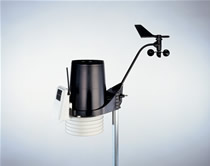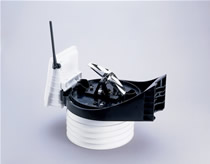

I have been interested in the weather for a number of years, well lets face it I live in the UK, it's one of our main pre-occupations. Having internet access enabled me to find sites maintained by people all over the world, who make use a wide array of equipment and software to publish their local weather information.
I found the sites (go to the links page), and the combination of weather and technology fascinating (yeah, I know, major geek alert!!!!), there are also many communities, on the web, interested in weather who collate weather data and use it in scientific research, etc. (Wunderground, AWEKAS and CWOP).
I was hooked, so I thought I'd have a go :-)
My first foray into capturing weather data came in the form of a Lacrosse WS3600, it represented good value for money and was a great starter kit, however, reliability let it down and after 6 months I replaced it with a Davis Vantage Pro 2, which I bought from the nice people at Skyview, and which has worked flawlessly (this is mine shown on the left).
The Davis Vantage Pro 2 Wireless Weather Station consists of three parts: the ISS (integrated sensor suite), anemometer, and indoor display console.
The ISS and Anemometer (Outdoor equipment)


The Davis Vantage Pro 2 console, (shown right) receives the transmitted information and displays it. It also contains a data logger that uploads the data to a computer. This information is then interpreted by a wonderful piece of software called "Weather Display" written by Brian Hamilton. All of the real time data, graphs, etc are created by this piece of software and uploaded to the web site.

The station position isn't ideal, it is, however, an acceptable compromise between security, accessibility, safety and maintainability whilst ensuring the highest possible degree of accuracy. I have trees to the east of me which mean that wind speeds measured from this direction are likely to be lower than the equivalent wind speed measured in the open. The anemometer is now well above the roof line (a job for the spring turned into a belated job for the autumn!). I have also moved the solar sensor to the top of the pole, which means I can now measure the solar radiation until the sun sets, although, with the sun being lower in the sky, during the winter months I am unable to measure radiation from the rising sun.
I have also recently added a FARS radiation shield, to improve the accuracy of temperature measurement by reducing the effect of solar radiation on the ambient temperature around the temperature sensor.
Web Images
Lastly I use a webcam to capture images every minute, during the day, showing the southern sky (well what I can see of it), these are used to create stills, short animated sequences and all day videos, which are then uploaded to the web site.
I'm going to increase the number and quality of the weather cameras this year, including live streaming, I found www.camsecure.co.uk to be a really good source for very reasonably priced cameras, dvr cards, etc. and also has excellent support from knowledgeable and friendly people.